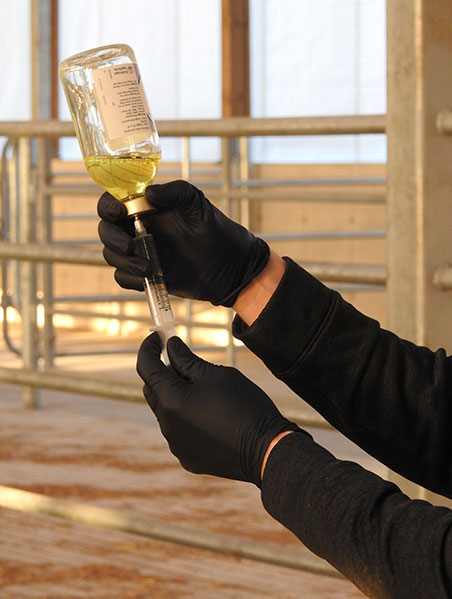Section 3 | Bovine Respiratory Disease in Veal Calves
Page 16 /
Treating Bovine Respiratory Disease
Antimicrobials are necessary to treat calves that have respiratory disease. Choosing the right antimicrobial will lead to the best response and will reduce the risk of relapses or death.
Remember, antimicrobial stewardship isn’t just about reducing or eliminating the use of antimicrobials. Stewardship, in part, means using the right drug for the right condition at the right dose. For more information, visit our Antimicrobial Stewardship FAAST Review
Unfortunately, when compared to feedlot animals, there are not many studies that have evaluated the effectiveness of certain antimicrobials over others for respiratory disease in young calves. But there are some lessons we can extrapolate to help inform which antimicrobials to use.
Similar effectiveness has been found among many antimicrobials, including:
- Florfenicol
- Tulathromycin
- Enrofloxacin
- Danofloxacin

Source: ACER Consulting Ltd.
So how do we choose? As good antimicrobial stewards, we should consider the importance of specific products to human medicine. Enrofloxacin and danofloxacin are Category I antimicrobials (most important to human health). These should not be used as a first-line treatment. Instead, tulathromycin (Category II) and florfenicol (Category III) are suggested as first-line treatments.
Of course, what works for one farm may not work for another. Work with your veterinarian to determine the best way to treat your animals for respiratory disease. Specifically, discuss what to use as a first-line therapy and what could be used as a second-line for cases that don’t respond.
It is important to use these antimicrobials prudently to support their continued effectiveness. When antimicrobials are used inappropriately, resistance develops and spreads to both humans and other animals, and illness becomes more difficult and expensive to treat
It is also important to mention that nonsteroidal anti-inflammatory drugs (NSAIDs) can have a positive impact on reducing inflammation that occurs with respiratory disease. NSAIDs also help to reduce fever. These drugs should be part of the discussion with your veterinarian in providing multimodal treatment for BRD. Work with your veterinarian to develop a standard operating procedure for the use of NSAID medications and establish withdrawal times for animals that will be sent to market. For more information, see our page on extra-label drug use.

Source: ACER Consulting Ltd.